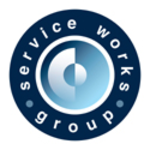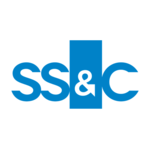Description

QFM

iOFFICE
Comprehensive Overview: QFM vs iOFFICE
QFM and iOFFICE are both facility management software solutions that cater to different aspects of workplace and facility management. Here's an overview of each:
QFM
a) Primary functions and target markets:
QFM, also known as Quick Facilities Management, is a comprehensive facilities management software typically used for maintenance management, asset management, space management, and compliance management. The software aims to streamline operations for organizations looking to automate and improve maintenance and facility management tasks.
- Primary Functions:
- Reactive and planned maintenance management
- Asset tracking and management
- Space management
- Compliance tracking and reporting
- Mobile workforce management
- Helpdesk and support ticketing
- Target Markets:
- Corporate real estate
- Education institutions
- Healthcare facilities
- Hospitality industry
- Retail chains
- Public sector organizations
b) Market share and user base:
QFM is considered a mid-sized player in the facilities management software market. Its user base primarily comprises medium to large enterprises that require robust maintenance and operational management solutions. However, specific market share statistics are not typically disclosed by the company.
c) Key differentiating factors:
- Strong emphasis on maintenance management with powerful scheduling and compliance features.
- Mobile accessibility to support field operations.
- Customizable workflows to meet specific organizational needs.
- Integration capabilities with existing enterprise software solutions.
iOFFICE
a) Primary functions and target markets:
iOFFICE is a leading workplace management software focused on enhancing workplace experiences, using solutions like integrated workplace management system (IWMS) technologies. It facilitates space optimization, employee experience, and workplace resource management.
-
Primary Functions:
- Space and move management
- Workspace reservation and booking
- Employee experience tools
- Asset management
- Visitor management
- Environmental monitoring and IoT integrations
-
Target Markets:
- Technology companies
- Media and entertainment
- Legal services
- Financial services
- Multinational corporations
- Co-working spaces
b) Market share and user base:
iOFFICE holds a strong position in the workplace management sector, with an expansive user base that includes Fortune 500 companies. Its focus on enhancing workplace experiences and integrating IoT solutions gives it a competitive edge in this market.
c) Key differentiating factors:
- Advanced space management and optimization capabilities.
- Highly focused on enhancing employee experience through modern workplace solutions and IoT.
- Strong emphasis on data analytics and reporting for strategic decision-making.
- Scalable for large, multinational organizations looking for integrated global solutions.
Overall Comparison:
- Market Orientation: QFM is more centered on traditional facilities and maintenance management, whereas iOFFICE emphasizes workplace experience and space optimization.
- Functionality Focus: QFM provides robust maintenance and compliance features, which are crucial for regulated industries. iOFFICE offers advanced tools for enhancing the employee experience and maximizing space efficiency.
- Technology and Integration: iOFFICE integrates modern technologies such as IoT to provide data-driven solutions, which appeal to tech-savvy organizations. QFM focuses on field operability and compliance, essential for sectors with heavy maintenance needs.
- User Experience: iOFFICE is more user-centric, focusing on creating a seamless experience for employees, while QFM focuses on operational efficiency and compliance for facility management teams.
In conclusion, both QFM and iOFFICE deliver tailored solutions catering to specific aspects of facility and workplace management. The choice between them would largely depend on an organization's specific needs for either maintenance and compliance management (QFM) or space and employee experience enhancements (iOFFICE).
Contact Info

Year founded :
2014
Not Available
Not Available
Estonia
http://www.linkedin.com/company/qfm-ee

Year founded :
2010
Not Available
Not Available
Morocco
Not Available
Feature Similarity Breakdown: QFM, iOFFICE
As of the most recent data, both QFM and iOFFICE are prominent facilities management software solutions that offer a range of features designed to aid in efficient workspace management. Here is a breakdown of their feature similarities and differences:
a) Core Features in Common
Both QFM and iOFFICE offer a suite of core features commonly found in facilities management software, including:
-
Work Order Management: Both systems provide features for creating, tracking, and managing work orders to streamline maintenance tasks.
-
Space Management: Both products include tools for managing and optimizing the use of physical space within a facility.
-
Asset Management: Each solution offers capabilities to track and manage assets, ensuring proper maintenance and lifecycle management.
-
Reporting and Analytics: These platforms provide reporting tools to analyze data, track performance metrics, and support decision-making processes.
-
Mobile Access: Both QFM and iOFFICE offer mobile applications that allow users to access core functionalities remotely, providing flexibility and convenience.
-
Room Booking Management: Each software provides features for booking and managing meeting rooms and other resources within the facility.
b) User Interface Comparison
-
QFM: Known for its user-friendly interface, QFM offers a clean and intuitive dashboard with customizable widgets. It tends to focus on straightforward navigation and accessibility, making it easier for new users to adapt.
-
iOFFICE: iOFFICE features a modern, responsive design with a focus on ease of use and intuitive navigation. Its interface is graphical and often praised for being visually appealing, which can enhance user engagement and reduce the learning curve.
c) Unique Features
-
QFM:
- Compliance Management: QFM places a significant emphasis on compliance management, helping organizations adhere to industry standards and regulations.
- Customizable Workflows: Offers highly customizable workflow configurations to suit specific organizational processes.
-
iOFFICE:
- Integration Ecosystem: iOFFICE boasts a robust integration ecosystem, facilitating seamless connections with a wide variety of other business software solutions, such as HR, IoT, and CRM systems.
- Employee Experience Tools: iOFFICE includes specific features designed to enhance employee experience, such as touchless entry systems and social distancing tools, which became particularly relevant in the post-pandemic era.
In conclusion, while both QFM and iOFFICE share a strong set of core features, they differ in their approach to user experience and specific feature sets that cater to distinct aspects of facilities management. Organizations should consider these differences alongside their unique needs to determine the best fit for their operations.
Features

Not Available

Not Available
Best Fit Use Cases: QFM, iOFFICE
QFM and iOFFICE are both facilities management software solutions designed to streamline operations, enhance efficiency, and improve management of physical spaces. While they share some similarities, each has distinct features and strengths that make them suitable for different types of businesses and scenarios. Here's how they cater to different industry verticals and company sizes:
QFM (Quantitative Facilities Management)
a) Best Fit Use Cases for QFM:
- Facilities Management-Intensive Industries: Industries such as healthcare, education, and large-scale manufacturing often require robust asset management, maintenance scheduling, and compliance tracking, making QFM a solid choice.
- Large Enterprises: Large organizations with extensive facilities spread across multiple locations can benefit from QFM's ability to provide centralized control and visibility over all operations.
- Projects Requiring Complex Maintenance Management: QFM is ideal for projects where complex maintenance workflows need structured management, such as in environments with critical systems needing regular and precise upkeep.
- Compliance and Safety-Oriented Projects: Businesses in heavily regulated industries such as pharmaceuticals or food manufacturing can leverage QFM for its strong compliance management features.
d) Industry Verticals or Company Sizes for QFM:
- Healthcare: Managing hospital infrastructures with a focus on preventative maintenance and compliance.
- Education: Universities and large educational institutions needing efficient management of campus facilities.
- Manufacturing: Facilities with intricate maintenance needs for production equipment.
iOFFICE
b) Preferred Use Cases for iOFFICE:
- Corporate Real Estate and Office Management: iOFFICE excels in managing dynamic office environments, supporting tasks such as space optimization, real-time occupancy analytics, and moves/adds/changes (MAC).
- Workspace Optimization Projects: Companies looking to transform their workplace strategy to adopt flexible or hybrid working models find iOFFICE's solutions highly beneficial.
- Medium to Large Enterprises: Suitable for businesses with medium to large workforces that need to enhance employee experience while managing space efficiently.
- Tech-Savvy Organizations: Firms that are interested in leveraging IoT and sensor-based data for smarter facilities management.
d) Industry Verticals or Company Sizes for iOFFICE:
- Corporate Offices: Large businesses requiring detailed insights and management of office spaces to maximize efficiency and improve employee satisfaction.
- Financial and Tech Sectors: Companies focusing on innovative workspace solutions and the need for detailed space utilization metrics.
- Flexible Work Environments: Firms adopting hot-desking, agile work environments, and demand for robust mobile workforce management tools.
Conclusion
Both QFM and iOFFICE cater to specific needs and priorities within facilities management. QFM is generally more suited for industries or projects that focus heavily on compliance, asset management, and maintenance, whereas iOFFICE appeals more to those looking to optimize office spaces and enhance the employee experience through modern technology and data-driven insights. Both platforms offer scalability, though the choice largely depends on the specific operational and strategic goals of the business.
Pricing

Pricing Not Available

Pricing Not Available
Metrics History
Metrics History
Comparing teamSize across companies
Conclusion & Final Verdict: QFM vs iOFFICE
To provide a thorough conclusion and final verdict for QFM and iOFFICE, it's important to analyze their value proposition, strengths, constraints, and offer specific recommendations for potential users.
Conclusion and Final Verdict
a) Best Overall Value
Best Overall Value: iOFFICE
iOFFICE generally offers a more comprehensive solution when it comes to integrated workplace management systems (IWMS). It provides extensive features that appeal to a wide range of industries and facility management needs, such as space management, facility maintenance, and employee experience enhancement. The platform's cloud-based nature, intuitive user interface, and robust third-party integrations make it a compelling choice for organizations seeking scalability and user-friendly support.
b) Pros and Cons of Each Product
QFM:
Pros:
- Specialized in Maintenance Management: QFM excels in providing detailed and robust maintenance management solutions, making it an attractive choice for organizations with significant assets and facility operations that require high-level maintenance oversight.
- Strong Reporting Capabilities: Offers powerful analytics and reporting features that are essential for data-driven decision-making.
Cons:
- Complex User Interface: Some users find the software less intuitive, which can lead to a steeper learning curve for new users or occasional users.
- Limited Integration Options: QFM might not offer as many third-party integrations compared to other contemporary platforms, potentially limiting its ability to adapt to a fully integrated software ecosystem.
iOFFICE:
Pros:
- Comprehensive IWMS Solution: Provides a wide array of functionalities beyond maintenance, encompassing space management, employee experience, and real estate planning.
- User-Friendly Interface: Known for its intuitive design and ease of use, which can facilitate quicker adoption and higher utilization rates among employees.
- Scalable and Flexible: The cloud-based nature allows for scalability and the adaptability necessary to meet the evolving needs of growing organizations.
Cons:
- Cost Considerations: The broad range of features might come at a higher price point, which may be a significant factor for smaller organizations or those with more restricted budgets.
- Potential Overkill for Small Operations: For businesses that require only basic maintenance management, iOFFICE's extensive feature set may be more than necessary.
c) Recommendations for Users
- Evaluate Your Needs: Organizations should conduct a needs assessment to determine which platform aligns best with their operational goals. If your primary focus is advanced maintenance management, QFM may be more appropriate. In contrast, if you require a versatile, all-encompassing IWMS solution, iOFFICE stands out as a better option.
- Consider Variety of Use Cases: Large enterprises or facilities with diverse management requirements may benefit more from iOFFICE. On the other hand, sectors such as manufacturing or healthcare, where maintenance of equipment and infrastructure is critical, may find greater value in QFM.
- Plan for Integration and Scalability: Consider the importance of integration with existing software and future scalability. iOFFICE’s integration capabilities and cloud-based platform might offer a strategic advantage in these areas.
- Budget Analysis: Cost is always a factor; hence, evaluate the total cost of ownership over time versus immediate budget constraints.
In conclusion, while both QFM and iOFFICE have their unique advantages, iOFFICE is generally the preferable choice for organizations looking for an expansive, flexible solution capable of handling a variety of workplace management tasks. Proper assessment of organizational needs, budget, and existing infrastructure will help ensure the choice enhances operational efficiency and meets future demands.
Add to compare
Add similar companies




